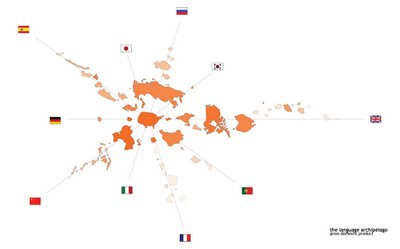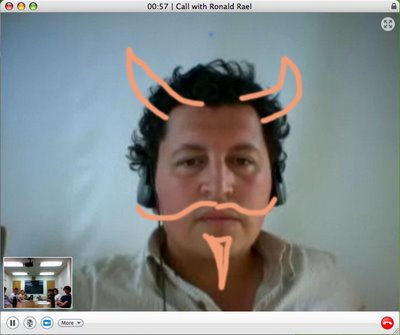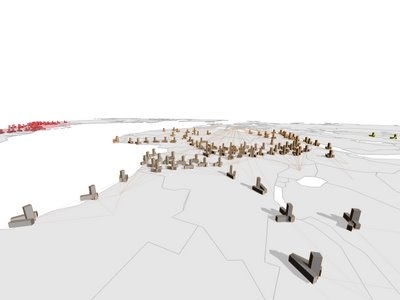we live in a world that is increasingly dominated by the internet. a mega-collection of information is instantly available to us at all times. what we take for granted, it seems, is the position of dominance that the u.s. enjoys. becuase the internet revolution began in the u.s., we have the most extensive network infrastructure; we can also rely on english to access roughly 70% of internet content. compare this with the world's non-english speakers who can access no more that 6% of internet content with their native tongue. (
more about the internet)
the dominance of the english language on the internet in beginning to diminish, as more and more content in other languages is made available. these languages, however, only represent the world's superpowers that have the resources to implement a network infrastructure at a large scale. in the third world, access to the interent is severely limited. and even when it is available, users are usually forced to use a second language to access internet content.
the first goal of this project is to illustrate the current state of language on the internet. geography has been abandoned, and the world has been transformed into the
language archipelago. the hope is that this map can inspire a vision to remake the archipelago and revolutionize the internet by means of global inclusion.
 img_1.1
img_1.1 img_1.2
img_1.2each country is placed within the archipelago to indicate its
ascendancy on the internet within each of the ten most dominant internet languages. each language is indicated by the flag of its origin. the closer a country is to the origin (in x, y, and z axes), the more power in enjoys in the internet. language and network infrastructure are considered in this placement.
 img_2.1
img_2.1each country is also connected by a language
continuum. here, ascendancy is ignored. each country is considered for is contribution to the internet culture in all languages.
 img_2.2
img_2.2it is also important to appreciate the archipelago in three dimensions:
 anim_1.1
anim_1.1 - transformation
 anim_1.2
anim_1.2 - the archipelago (quicktime VR)
as would be expected, network infrastructure is directly related to many other factors, as illustrated below:
 img_3.1
img_3.1 - night
note the density of light at the origin
 img_3.2
img_3.2 - router density
shows a trend that is very similar to the 'world at night' map above
 img_3.3
img_3.3 - gdp
note the density of gdp at the origin
 img_3.4
img_3.4 - aids pandemic
aids tend to be inversely related to gdp in the archipelago
its seems that creation of a global mega-network to supplement the internet infrastructure could provide true globalization of the internet. a network of scalable, easily deplorable units could be created to provide access to information via the internet in remote regions currently lacking appropriate infrastructure. this would serve to provide more universal inclusion on the internet. it would also result in a diversification of language on the internet as more people speaking more languages could contribute. it would also aid in the preservation of languages by providing a forum for small language communities to interact and by creating an archive (both written and spoken) of less known languages.
this new mega-network could also serve purposes beyond language and the interent. it could serve as a portal for the delivery of health care. it could also facilitate the spread of democracy by providing a terminal for electoral voting in remote areas.



















